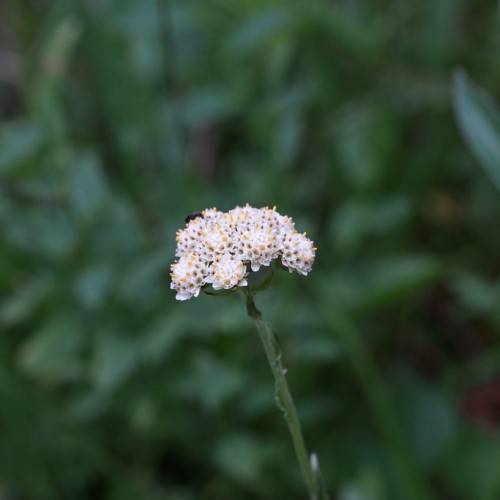
Tall Pussytoes
Antennaria anaphaloides
Also Known As - Handsome Pussytoes,Pearly PussytoesWatering:
Minimal
Hardiness Zone:
Flowers:
Flowers
Sun:
full sun,part shade
Fruits:
Fruits Ready In Summer
Leaf:
Yes
Growth Rate:
Low
Drought Tolerant:
Yes
Salt Tolerant:
Yes
Care Level:
Medium
watering
The Woodland Tarweed needs to be watered regularly for best growth though it can tolerate periods of drought. Water the plant during the spring and summer when planting and for the first year until it is established. After the plant has established roots, it needs to be watered 1-2 times per week, depending on the weather, amount of sunshine and temperature. In hot and dry weather, or during long periods of no rain, it may need additional watering. Soak the plants in the evening when it's cooler to reduce water loss due to evaporation. Avoid overwatering as this may lead to root rot.
sunlight
Woodland tarweed (Anisocarpus madioides) is a shade-tolerant plant species native to Oregon and California. In these regions, Tarweed prefers partial shade and at least 4 or 5 hours of direct sunlight a day for optimal growth. In general, direct sunlight is best for this plant species and ample photosynthetically active radiation (PAR) is required for efficient photosynthesis and overall plant development. Tarweed will remain in a vegetative state under higher levels of shade, typically found in dense forested areas. In addition to direct sunlight, research has shown that the average soil temperature for this species should remain at or above 20 degrees Celsius (68F) year round. This species does not do well in cold, wet soil conditions and higher soil temperature can increase its capacity for photosynthesis. Overall, Woodland Tarweed should receive 4 to 5 hours of direct sunlight a day and average soil temperatures should remain above 20 degrees Celsius (68F) year round for optimal development and growth.
pruning
Woodland tarweed should be pruned twice during the growing season, typically around the months of April and August. Pruning should begin early and should avoid removing more than 1-third of the plant at any 1 time. Start by removing any dead or diseased branches and then shape the shrub by thinning out any overly dense growth. Pruning should be done selectively, focusing on creating an open, rounded form and removing any inward-growing branches. This species is adaptable to regular pruning and responds well by growing more vigorously and becoming bushier with selective pruning.
